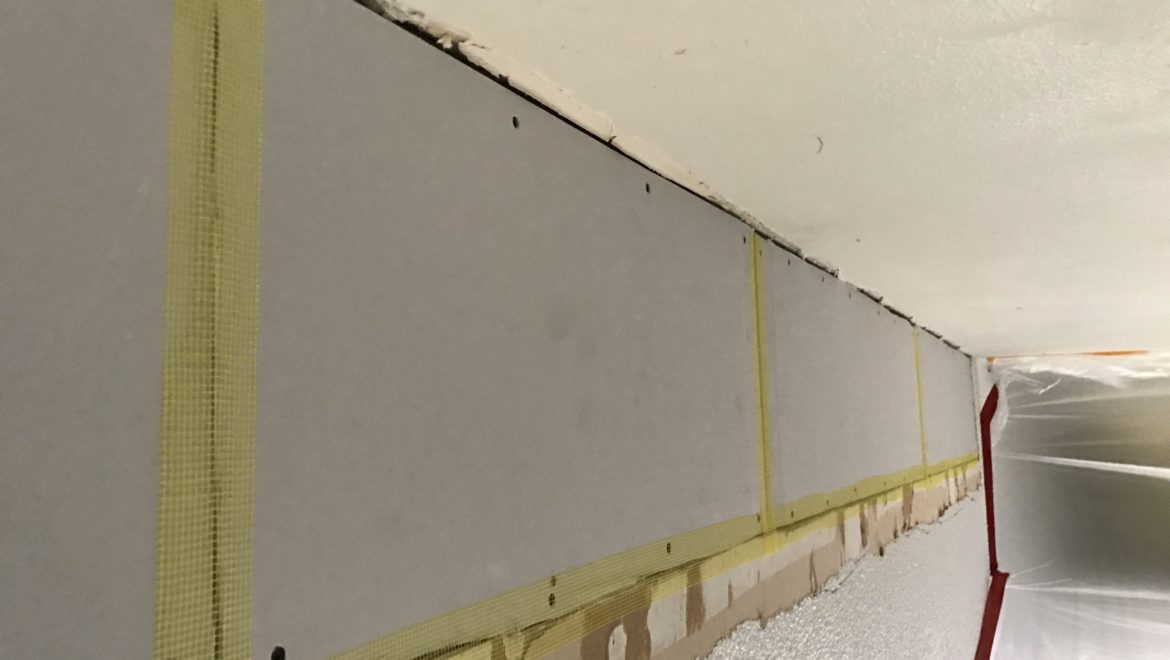Early Morning Arrival
The working day of a drywall patcher almost always starts the same. First, knock on the customer’s door, greet them and take a tour of the house to see where the work is needed. We start by covering the floors with canvas drop cloths. These drop cloths are used to catch debris but also mainly used to mark our walkway around the job. They seem like a red carpet laid out for our patch guys. More importantly these drop cloths are put in place to protect our customers’ floor. Whether it’s hardwood, tile, carpet, linoleum or even bare plywood, we treat your home as if it was our own during our phase of the project.
Knockdown Texture? No Problem! Patcher!
Next, comes the phase after the floor is protected and the rolls of masking tape make an appearance. The team splits into two groups: one group covers the house with plastic, completely covering any surface we won’t be working on. The second group organizes the tools in either the customer’s garage or driveway. We ALWAYS lay down a tarp to project the garage or driveway from any residue our tools may carry. These tools range from ladders to skill saws. One necessity us patchers must have is our handy bag. This bag contains a screw gun, hammer, hand saw, measuring tape, spare screw gun battery, drywall blade, and half a pound of drywall screws. With this equipment in our hands, we begin the drywall repair process.
The Work Can Now Begin
The first step in repairing a hole is to create support for the piece of drywall to be installed. Any type of material can be used as long as it has structural integrity. The best and most economical method is to use 1×2 strips of wood. It’s all due to its small, yet durable size, and how inexpensive it is. After securing the 1x’s with screws, we install the drywall. The installation is done two ways: reusing the previously removed drywall, or making a new piece out of the appropriately sized drywall(if the pre-existing piece had water damage, or if it had been plaster, we replace the piece with new drywall).
Then, the mudding process can begin. This process is what makes the job difficult for most. We are known as “artists” or “perfectionists” in our field. The work we produce is bar none. There’s no exposed mesh tape, no cracks along the seams, and most of all no scratches or imperfections on the patch itself. Furthermore, if the patch needs texture, we are also trained in working with orange peel, knockdown or even skipped trowel texture. Most noteworthy, while certain textures can’t be matched and we make this very clear to our customers BEFORE starting the project.
All Done
A patcher can work in this field for many years and still not know how to properly patch a hole. Really, there’s no “wax on, wax off.” YouTube won’t help you here. Learning to patch the right way and pleasing many of our customers is what makes the job worth it. Granted, it’s never easy pleasing the most particular people. Nonetheless, we do certainly try our best in pleasing everyone of our homeowners. Working for PipEase is a pleasure, the owners know how to treat their employees and get the job done. No used car salesman or business majors here. Expect quality work for a reasonable rate. Call PipEase (866-664-3273) and ask for Frank to be your patching Foreman.
– Blog brought to us by Frank P.
Like us on Twitter
follow us on Instagram


Add Comment